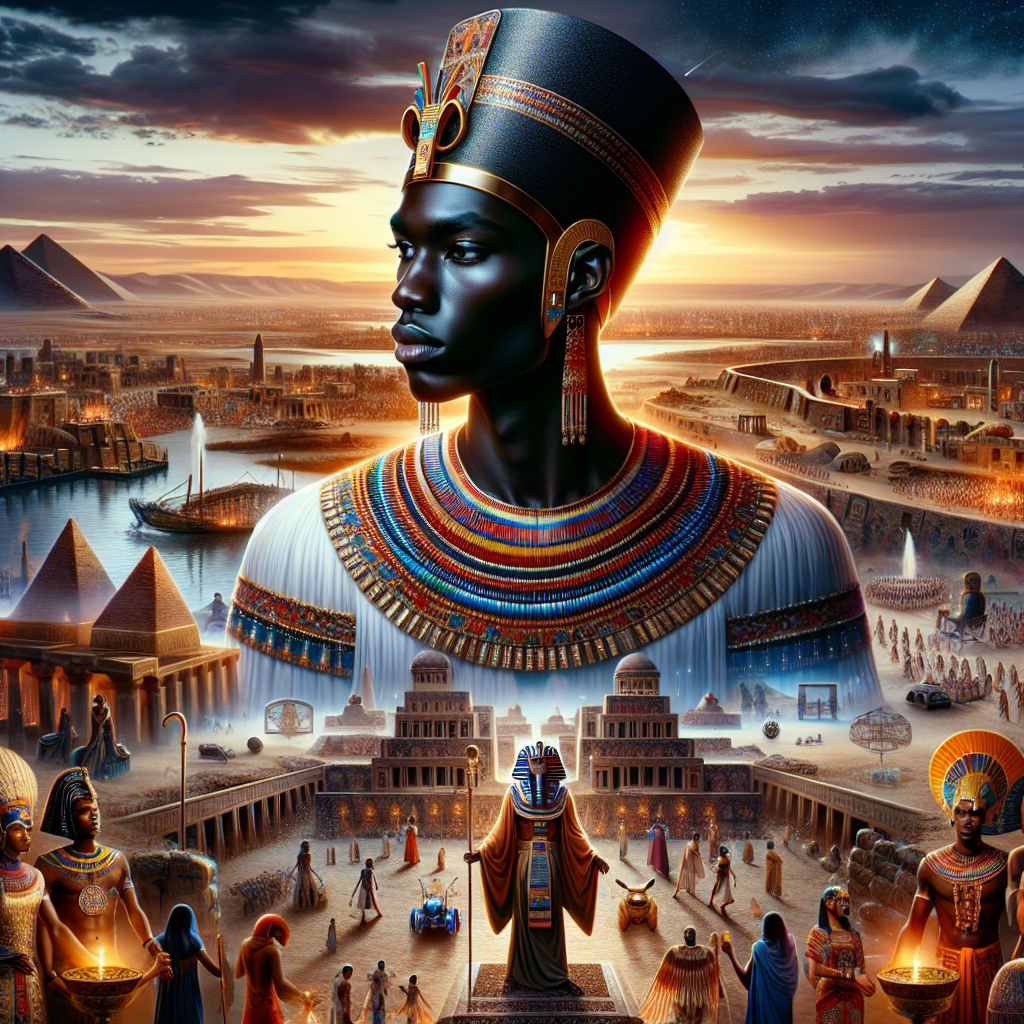Black Pharaohs of Nubia: Unpacking Their Legacy with a Twist
Introduction
Ah, Nubia! The land of the Black Pharaohs — rulers who rocked the ancient world while the rest of the globe was busy being, well, not quite as fabulous. Isn’t it just adorable how mainstream history seems to forget all about them? Let’s shake off the dust and take a deep dive into this overlooked gem of history. Spoiler alert: Our beloved Nubians weren’t just around for moral support; they shaped the cultures and politics of the region like pros, especially during Egypt’s 25th dynasty. So grab your favorite beverage, and let’s unravel the brilliant yet often overshadowed tapestry of Nubian history together!
Geographical and Cultural Context of Nubia
Located just south of Egypt, Nubia is that cool kid everyone wanted to be friends with in ancient times. Stretching through modern-day Sudan and parts of Egypt, this region was the powerhouse known as the Kingdom of Kush. Wealth? Check. Military strength? Absolutely. Nubia was the bustling trade corridor linking Sub-Saharan Africa with the majesty of Egypt. So, while Egypt was busy carving out hieroglyphs, Nubians were over here crafting a vibrant tapestry of culture, art, and innovations. Yes, folks, Nubia was turning it up long before most even knew what a pyramid was!
The Emergence of the Black Pharaohs
Now, here’s where the plot thickens. Enter the Black Pharaohs. Around the 8th century BCE, these pioneers strutted their way into history books, bringing with them a flair that could put any modern-day ruler to shame. Let’s give a high-five to Piye, our OG uniter of Upper and Lower Egypt, who not only consolidated power but also ignited a puppet show of Nubian art and architecture. Make way for Shabaka, who took Nubian influence to new heights, enforcing control over Egypt and initiating a cosmic trade of ideas. And don’t forget Taharqa, the military genius and territorial enlarger. Together, these Black Pharaohs smashed through stereotypes and reshaped governance in ways the establishment didn’t want to acknowledge.
Architectural Innovations of the Black Pharaohs
Okay, let’s talk about Nubian architecture—because these warriors weren’t just ruling; they were building! Their pyramids had a unique flair of their own, with steep angles that scream “we do things differently.” While Egypt was busy bragging about its larger pyramids, Nubia’s structures—found in beloved sites like Meroë and Napata—were illustrations of art, innovation, and advanced engineering. And it wasn’t just about stones and bricks either. Nubians sharpened their irrigation methods and upped the ante in jewelry and pottery, displaying a sophistication that might have made their Egyptian counterparts a tad jealous.
Cultural Exchange between Nubia and Egypt
Forget the narrative that puts Nubia in the shadows. The relationship between Nubia and Egypt was a cocktail of conflict and juicy cultural exchanges. The Black Pharaohs weren’t afraid of mixing it up with the Egyptians, incorporating their customs while imparting their unique spin. Imagine Egyptian temples adorned with Nubian spirituality—because why choose when you can have both? This rich cultural dialogue didn’t just impact art and architecture; it set the stage for a cultural renaissance that echoed through the ages.
The Decline of the Black Pharaohs and Their Legacy
Now, here’s the twist. Despite their colossal achievements, the Nubian dynasty faced a tragic decline due to outside pressures like Assyrian invasions and their own internal dramas. The fall of the Black Pharaohs brought a slow fade into history, often eclipsed by Egypt’s grandiosity. But let’s be real—their legacy is like a phoenix rising from the ashes of whitewashed narratives. Their story serves as a potent reminder that African history deserves more than a footnote in dusty textbooks.
Modern Reflection on Nubia’s Significance
Fast forward to today, and guess what? Nubia is getting the spotlight it deserves, thanks to brave scholars and archaeologists challenging the norm. New findings are painting a fuller picture of Nubian life and its pivotal role in shaping history. It’s high time we unpack the biases of the past and include all voices in our historical saga—because who wants an incomplete story? The rich layers of Nubia compel us to rethink our approach to ancient histories and challenge those boring old narratives that have dominated for far too long.
Conclusion
So, the saga of the Black Pharaohs of Nubia is not just a history lesson; it’s a call to action. It’s a reminder to enrich our understanding of humanity by embracing a myriad of tales that celebrate diversity in thought, culture, and identity. Join the movement of recognizing the brilliance of the Black Pharaohs—because let’s be honest; their legacy rocks harder than any watered-down history class can explain!
And there you have it! A sprinkle of sarcasm, a dash of history, and a whole lot of love for the Black community. Let’s keep the conversation about Nubian history alive and flourishing—because every story matters!



0 Comments